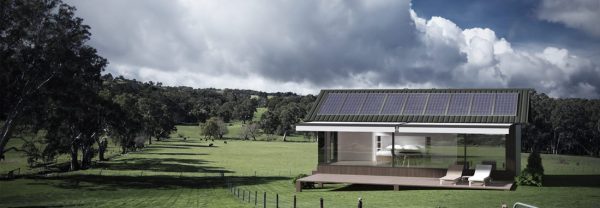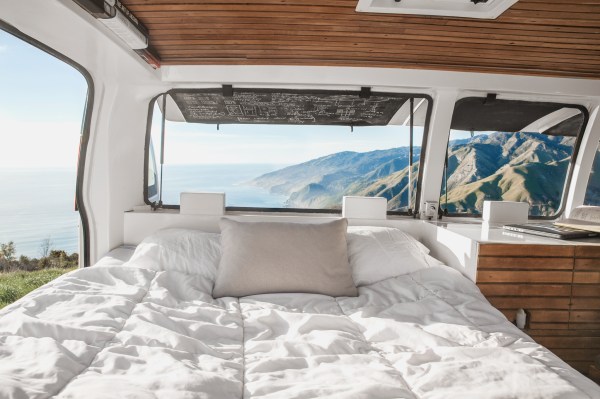In many parts of the world, living in a trailer has gained a social stigma. We’re talking about a rectangular building placed on three wheels and towed to your preferred plot of land. It’s going to take a lot to break that social stigma, but this is a pretty sweet attempt.
PassivDom is an off-grid home. It sidesteps the electrical grid as well as water and sewer service. It’s marketed as utilizing revolutionary breakthrough in wall insulation which they claim makes it very easy to heat and cool. In addition to this self-sustaining angle, it taps into the tiny home movement with a footprint of just 36 m2 (4 m by 9 m; about 118 390 ft2 or 13′ by 30′).
For this to make sense you really need to get the “Autonomous” model, the only one that is designed for “off-grid” living and comes with solar panels and battery storage plus water storage and purification. That’ll set you back 59,900 € (about $63,461 USD) but hey, it does come with “high quality minimalistic furniture” which the best way we can think of to serve Ikea nesting instinct without saying the brand name. Yep, this ticks all the “marketing to millennials” boxes. We’re kind of surprised it’s not doing crowdfunding.
So where’s the hack? Obviously this is a hard sell at 1,664 €/m2 ($538 $163/ft2). A project of this size and scope is well within the purview of a single, motivated hacker, and arguably a weekend project for a well-skilled team from a hackerspace. Tiny Houses started as a build-it yourself so that’s already solved. We’ve seen what it takes for hackers to add solar to their RVs, and experiments in home-built power walls. Water storage and purification is already solved and quite affordable at the home store.
Has anyone built their own off-grid tiny house? If so, let us know what went into it. If not, what are you waiting for?













